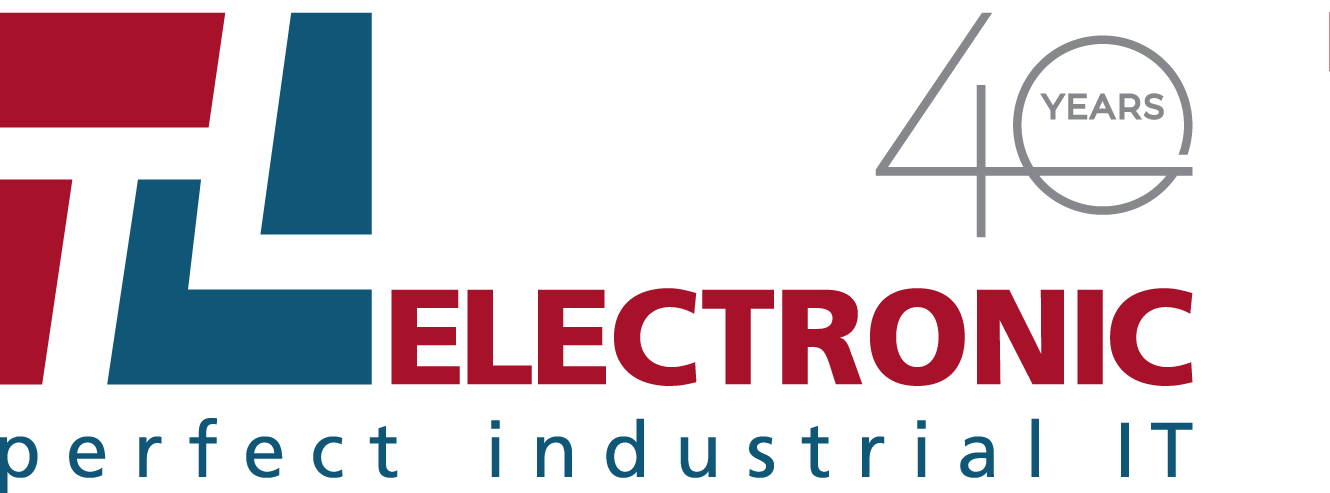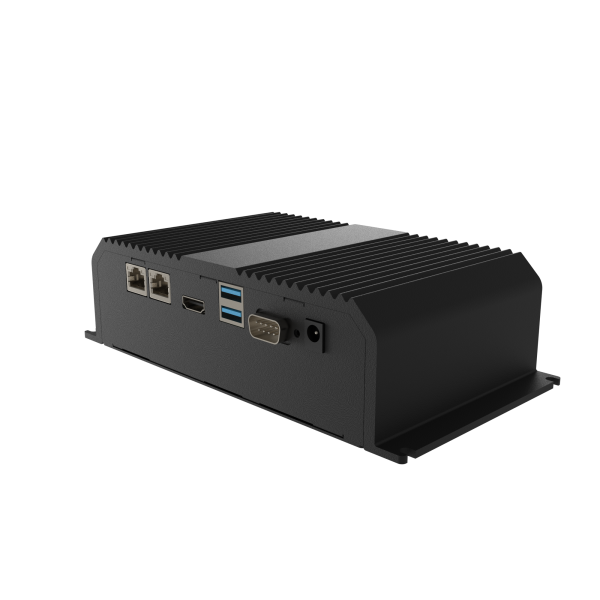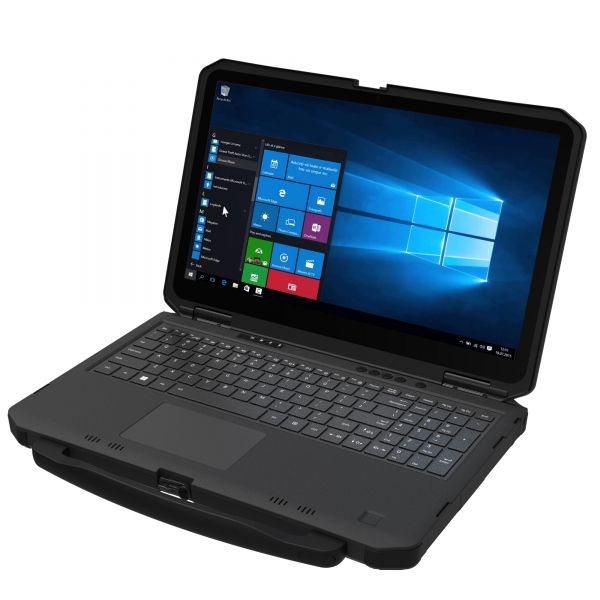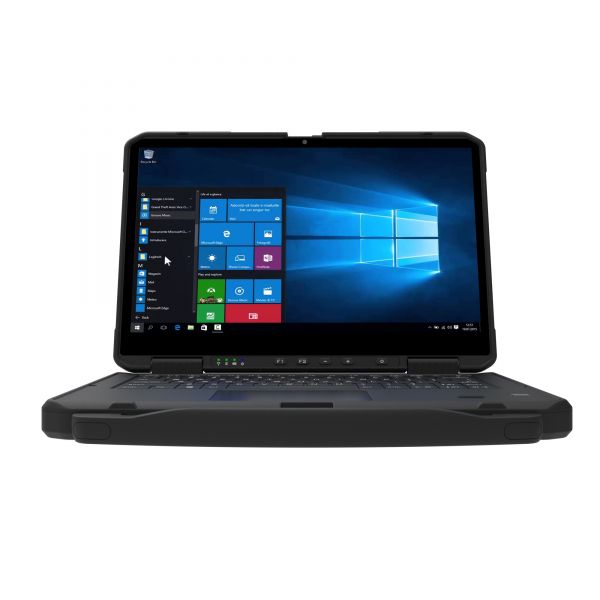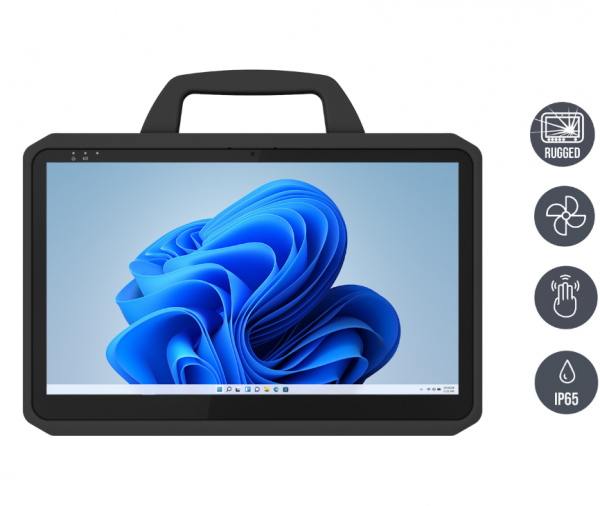Responsiveness, data sovereignty, and reliability through Edge AI.
Edge AI panel PCs, Edge box PCs, AI-enabled tablets, and laptops as game changers.
The world of industry and automation is undergoing fundamental change. Traditional cloud-based data processing is increasingly reaching its limits – especially when it comes to speed, responsiveness, and security. This is where edge AI comes in: artificial intelligence, directly at the point of data generation, promises fast analysis, autonomous decisions, and minimal latency. But the path to successful edge implementation is complex. Companies face a multitude of technical and infrastructural challenges.
One of the biggest hurdles is striking the right balance between computing power and energy efficiency. While AI algorithms have to process enormous amounts of data in real time, resources at the edge of the network are often limited. In addition, there are high demands on the robustness of the systems, as edge devices often have to function reliably under extreme environmental conditions – whether in production halls with dust and vibrations, in mobile use on vehicles, or outdoors in wind and weather.
Another increasingly critical aspect is data security. Processing sensitive information directly at the edge is intended to shorten the path to the cloud and thus minimize security risks – but at the same time, the devices themselves must be particularly well protected against physical access, manipulation, or cyberattacks. Especially in industrial environments, where production data, trade secrets, or safety-critical information are at stake, no compromises can be made here.
Finally, long-term availability is also an often underestimated issue: Edge systems will typically be in use for many years. Not only do they need to remain technologically up to date, but they also need to be supported in the long term and supplemented with compatible hardware. Anyone relying on Edge AI must therefore also act strategically and with foresight when choosing the right hardware.
Current trends in edge AI: What is driving the industry right now
1. Shift from the cloud to the edge
More and more companies are shifting computationally intensive tasks from the cloud to the edge. The reason: lower latency, reduced bandwidth costs, and higher reliability make edge solutions a strategic necessity—especially in real-time scenarios such as visual quality assurance or predictive maintenance.
2. Integration of AI into embedded systems
Thanks to specialized chips (e.g., NPUs, TPUs), AI is increasingly being integrated into compact embedded devices. This allows even small devices at the edge to perform tasks such as image classification, speech recognition, or anomaly detection – without a connection to the cloud.
3. Advances in low-power AI
The trend is toward power-saving, energy-efficient AI systems that can be used autonomously and mobile. This enables applications in battery-powered devices, drones, or autonomous vehicles – always with local AI processing.
4. Standardization and interoperability
With the increasing spread of edge AI, the demand for standardized software interfaces, containerization (e.g., via Docker), and seamless integration into existing Industry 4.0 environments is growing. Platforms such as Azure IoT Edge and NVIDIA JetPack play a central role here.
5. Security-first design
Data sovereignty is a dominant issue: Companies are increasingly relying on security architectures that combine zero-trust principles, TPM, secure boot, and AI explainability. This makes edge devices not only powerful, but also secure and compliant (e.g., GDPR, IEC 62443).
6. Combination with 5G and Time Sensitive Networking (TSN)
The combination of edge AI with 5G and TSN brings new dynamics to the field of deterministic real-time applications – such as collaborative robotics or autonomous production control. Processing is decentralized, fast, and synchronized.
Processor architectures as the backbone for edge AI
Modern edge AI systems in industrial applications require enormous computing power combined with high energy efficiency. At the heart of these systems are the latest generation of processor architectures, such as those from Intel, which enable both parallel data processing and low power consumption thanks to hybrid performance and efficiency cores. These processors form the basis for reactive AI systems that respond to sensor or image data in real time – a must for applications such as visual inspection, predictive maintenance, or autonomous machine control.
Especially when combined with specialized GPUs from NVIDIA, such as those used for industrial AI workstations, deep learning models and complex neural -networks can be executed locally at the edge. The integration of tensor cores, high memory bandwidth, and a reliable thermal architecture is crucial here in order to be able to operate continuously under industrial conditions.
Temperature management and robustness: prerequisites for continuous operation
Edge AI computers often operate in harsh industrial environments. Dust, vibrations, electromagnetic interference, and extreme temperatures place high demands on the hardware. Fanless enclosures with sophisticated passive cooling concepts ensure reliable heat dissipation even during continuous operation at full load—without any moving parts that could fail.
The enclosures used are usually made of die-cast aluminum or stainless steel and are designed for operation in temperature ranges from -40 °C to +60 °C. Such systems are available in protection classes up to IP65 or IP67 and can withstand even high levels of humidity, moisture, or dirt. In vibration-intensive environments – such as vehicle assembly or the process industry – shock absorbers and specially secured plug connections ensure long-term operational reliability.
Flexibility through modular I/O interfaces
Edge AI systems must integrate into heterogeneous industrial infrastructures. To this end, they offer a wide range of interfaces: from classic COM ports for serial communication to multiple Gigabit Ethernet ports for redundant network connections to modern USB and CAN bus connections for peripheral devices and controllers.
Internal expansion slots such as PCIe x4, M.2, or Mini-PCIe are available for connecting additional sensors or memory extensions. Optionally, 4G/5G modules, Wi-Fi, or additional SSDs can be retrofitted. This modularity is essential for future-proof AI applications that need to grow with requirements.
Efficient AI acceleration with dedicated chipsets
Specialized AI accelerators such as the Hailo-8 are used in energy- or space-critical applications, such as mobile robotics solutions or decentralized monitoring units. With 26 TOPS (tera operations per second) and power consumption of less than 7 watts, this edge ML processor offers an excellent performance-to-energy consumption ratio.
Thanks to its native support for frameworks such as TensorFlow Lite, ONNX, and PyTorch, integration into existing software environments is relatively easy. Pre-trained models can be ported directly to the module without the need for extensive customization. This enables its use in real-time vision applications, audio analysis, anomaly detection, or multivariate process monitoring – wherever classic CPUs or GPUs would be too energy-intensive or oversized.
Security aspects: Physical and logical protection mechanisms
With data processing taking place directly at the network edge, physical and logical security requirements are increasing. Modern edge systems rely on encrypted storage areas, TPM 2.0 chips for platform integrity, and secure boot mechanisms to prevent tampering right from the start of the system. In addition, BIOS-level protection functions enable the blocking of I/O ports or the control of network interfaces via policy.
Many systems also offer protection functions during operation, such as automatic recovery after power failures, watchdog timers, and redundant operating systems. In sensitive environments—such as the chemical industry, critical infrastructure, or safety-critical production lines—devices can also be housed in tamper-proof enclosures with sealable access doors.
Application examples: Edge AI in practice
Edge AI is already being used successfully in smart city development to analyze traffic flows, pedestrian movements, and environmental parameters. Here, compact, powerful systems enable local processing of video data without having to send huge amounts of raw data over the network. The results—for example, for traffic flow optimization or the detection of dangerous situations—are available in a fraction of a second.
Another field of application is manufacturing: a leading North American manufacturer, for example, uses edge AI systems for real-time monitoring of compliance with safety regulations. The AI recognizes, for example, whether protective equipment is being worn correctly or whether restricted areas are being entered, and provides immediate feedback to staff or the control room – without having to go through a central cloud.
Our experts are always happy to advise you: Contact
All prices excl. value added tax
